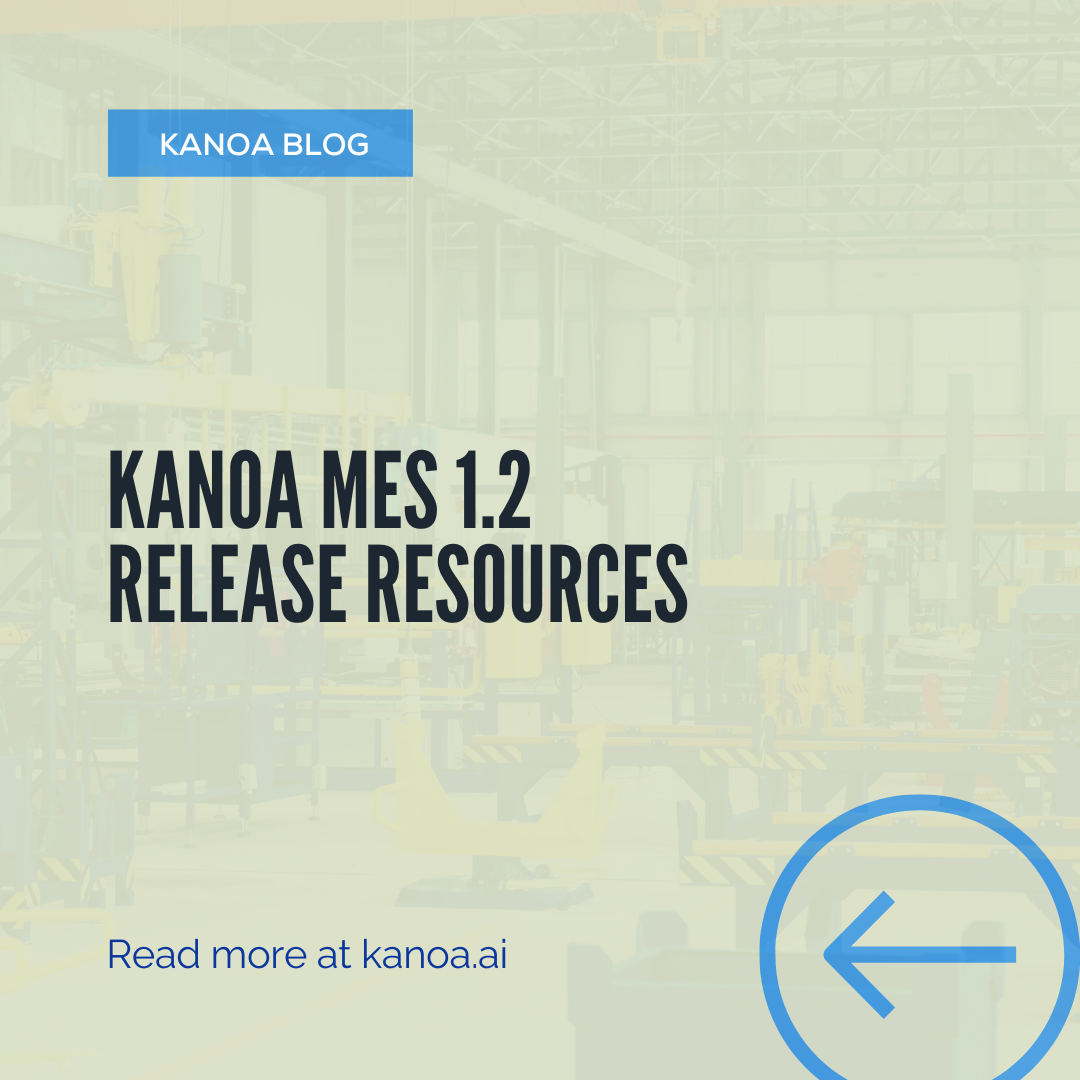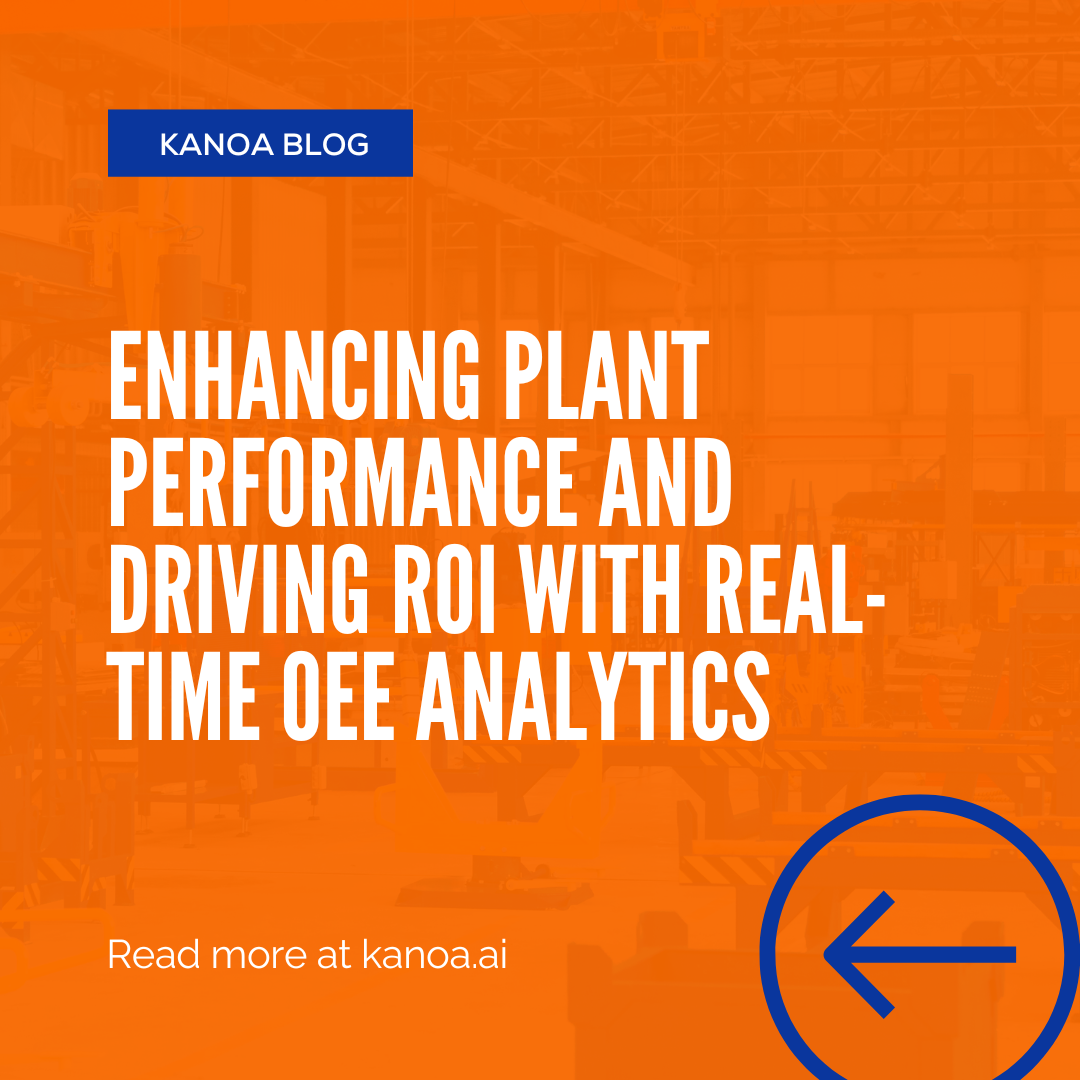Cloud vs. On-Prem MES: Which One is Right for You?
When selecting a Manufacturing Execution System (MES), one of the biggest decisions manufacturers face is whether to deploy the solution on-premise, in the cloud, or as a hybrid model. Each approach comes with its own advantages and trade-offs, depending on factors like scalability, cost, security, and operational resilience.
At Kanoa, we’ve helped manufacturers implement cloud, on-prem, and hybrid MES solutions, and we’ve seen firsthand how different deployment models impact efficiency and costs. More importantly, Kanoa MES’s unique licensing model—per Ignition Gateway—unlocks new possibilities for manufacturers looking to scale across multiple sites without ballooning costs.
Unlike traditional MES licensing models that charge per user, per screen, per data point, or per site, Kanoa MES’s per-gateway licensing model eliminates artificial barriers to scalability.
- Scaling by screen or by tag presents artificial barriers that make you pay more every time you want to apply a new use case.
- Scaling by user means some people don’t get access to the data they need due to cost restrictions.
- Scaling by site or asset often forces engineers to build their implementation in a way that does not follow best practices, simply to fit the licensing model.
All of this to say: scaling by gateway/server is so much simpler. It scales based on real-life scenarios, like load balancing or needing local instances. Most importantly, it’s generous—designed to give manufacturers a lot of power, rather than limit their ideas.
In this blog, we’ll break down the differences between cloud and on-prem MES, when a hybrid model makes sense, and how Kanoa MES enables manufacturers to optimize performance while keeping costs under control.
On-Prem MES: The Traditional Approach
Traditionally, MES solutions have been deployed on-premise, meaning the software is installed on servers physically located at the manufacturing facility. This approach has been the default choice for decades due to concerns around latency, security, and operational uptime.
✅ Benefits of On-Prem MES
- Low Latency, High Reliability – Critical shop floor operations remain responsive without relying on external networks.
- Data Control & Security – Manufacturers maintain full ownership of production data, with no cloud dependencies.
- Resilience to Internet Outages – If external connectivity fails, the MES continues to function on-site.
❌ Challenges of On-Prem MES
- Higher Infrastructure Costs – Requires investment in local servers, networking, and IT support.
- Limited Scalability – Expanding to new sites often means purchasing additional hardware and licenses.
- Difficult Enterprise Visibility – Data remains siloed at individual sites, making company-wide reporting harder.
When On-Prem Makes Sense
If your manufacturing operations demand ultra-low latency, strict data control, or the ability to run without internet access, an on-premise MES is often the best choice. However, when enterprise-wide reporting and multi-site coordination become a priority, a cloud-based or hybrid approach starts to look more attractive.
Cloud MES: Scalable & Cost-Effective
Cloud MES solutions shift the infrastructure burden to off-site servers, often hosted in platforms like AWS, Azure, or Google Cloud. Instead of running the software on local hardware, manufacturers access the system via the internet.
One of the fastest ways to deploy Ignition and Kanoa MES in the cloud is by using Ignition Cloud Edition. This version of Ignition is specifically designed for cloud environments, allowing manufacturers to rapidly implement MES solutions without worrying about server infrastructure. By leveraging Ignition Cloud Edition, companies can achieve scalability, rapid deployment, and enterprise-wide visibility with minimal IT overhead.
✅ Benefits of Cloud MES
- Scalability Across Multiple Sites – Easily manage MES for multiple factories without adding new physical servers.
- Lower Infrastructure Costs – No need to maintain on-site servers; cloud providers handle infrastructure.
- Easier Enterprise Reporting – Centralized data allows for real-time analytics across all plants.
- Automatic Backups & Updates – Reduces IT overhead with automatic software updates and backups.
❌ Challenges of Cloud MES
- Latency Considerations – While cloud computing is fast, real-time machine control and data acquisition might be impacted.
- Internet Dependency – If connectivity is lost, access to MES could be disrupted (though workarounds like MQTT help mitigate this).
- Security & Compliance – Some manufacturers have regulatory concerns about storing data off-premise.
How Kanoa MES Unlocks Cloud Scalability
Most MES solutions are licensed per site, per user, or per data point, making cloud deployments expensive as manufacturers scale. Kanoa MES is different.
Kanoa MES is licensed per Ignition Gateway, meaning manufacturers can install a single Kanoa MES license on a single cloud server and use it to run MES across multiple sites.
📌 Real-World Example: We have customers running Kanoa MES across 5 sites and 400+ assets using just one cloud-hosted Ignition Gateway. This model provides massive cost savings compared to traditional MES pricing models that charge per site or per user.
Cost Comparison: Kanoa MES vs. Per-Site or Per-Asset Pricing
If this were a per-site model, the cost could be 5 sites × $20,000 per site = $100,000. If it were priced per asset, at $200 per asset for 400 assets, the total cost would be $80,000. However, with Kanoa MES, it's a single server license for just $20,000, delivering the same or better functionality at a fraction of the cost.
How to Ensure Reliable Cloud MES Performance
To get the most out of a cloud MES deployment, we strongly recommend using MQTT (Message Queuing Telemetry Transport) for sending data from the manufacturing floor to the MES. MQTT is a lightweight, efficient protocol that ensures fast and reliable data transmission, even over unstable networks.
Hybrid MES: The Best of Both Worlds
For many manufacturers, the choice isn’t just cloud vs. on-prem—it’s both. A hybrid MES setup allows manufacturers to balance resilience, performance, and enterprise-wide visibility.
✅ Why Choose a Hybrid MES?
- Local Uptime with Cloud Scalability – Run Kanoa MES on-site for critical operations while using a cloud instance for enterprise-level reporting and coordination.
- Failover & Redundancy – If the cloud connection drops, the local MES instance continues running to ensure uninterrupted production.
- Optimized Cost Structure – By leveraging both on-prem and cloud, manufacturers reduce the need for extensive on-site IT infrastructure while maintaining critical uptime.
❌ Challenges of a Hybrid MES Approach
While a hybrid MES offers many benefits, it does introduce some additional complexities:
-
Increased System Complexity – Managing both on-prem and cloud-based MES means carefully defining where functionality belongs. Questions like "Should this logic run on-site or in the cloud?" come up frequently.
-
Additional Infrastructure Costs – Running both on-site and cloud servers means higher infrastructure and maintenance costs compared to a purely cloud or on-prem solution.
Most manufacturers don’t start with a hybrid architecture. Instead, they begin with either an on-premise or cloud deployment and extend to a hybrid model when the use case presents itself.
📌 Example: Some of our customers choose to install Kanoa MES both on-site and in the cloud. The on-site server keeps local operations running smoothly, while the cloud instance consolidates data from multiple plants for reporting and analytics.
Supporting Technologies in the Ignition Ecosystem
Beyond deployment models, several technologies within the Ignition ecosystem can enhance MES performance and data connectivity:
- Ignition Cloud Edition – We already mentioned this as a fast way to deploy Ignition and Kanoa MES in the cloud.
- Ignition Edge – A lightweight Ignition version for data collection and operator entry at the edge. While useful for connectivity, we do not recommend running Kanoa MES on Ignition Edge.
- Plantformance's FactoryBrain i4.0 – A fully-loaded Industrial Edge Server designed to support robust MES and automation architectures.
- Opto22 – Provides hardware solutions for sending MQTT data from automation equipment into Ignition, ensuring seamless data integration.
- CirrusLink MQTT Modules – Enable store-and-forward MQTT communications, ensuring reliable and efficient data transfer from edge devices to MES and enterprise systems.
Final Thoughts
Choosing between on-prem, cloud, or hybrid MES depends on your operational needs, IT infrastructure, and budget. The good news? With Kanoa MES, you’re not locked into one approach. Our flexible architecture supports all three deployment models, allowing manufacturers to scale cost-effectively while ensuring operational resilience.
📞 Want to explore the best MES deployment for your business? Let’s talk. Contact us to see how Kanoa MES can optimize your manufacturing operations.
You May Also Like
These Related Stories

Kanoa Joins Inductive Automation's Alliance Partner Program

Kanoa MES 1.2 Release Resources


No Comments Yet
Let us know what you think